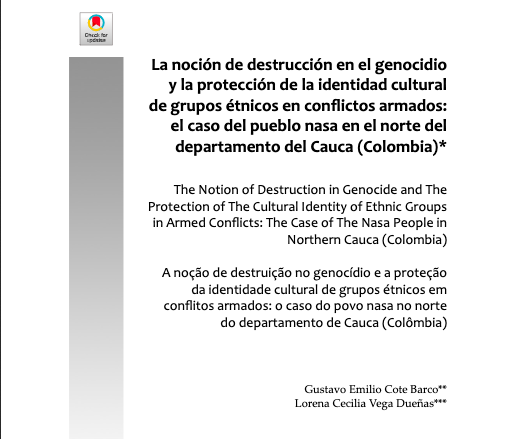
#Recomended by CAPAZ: destruction, genocide and protection of cultural identity of ethnic groups in armed conflict
A few months ago, we published an episode of La Lupa —one of the web series of our Education and Science Diplomacy project— in which professors Gustavo Cote and Lorena Vega of Universidad Javeriana discuss their research on the topic of genocide and how this category applies to Colombian transitional justice. This specifically concerns the case of the Nasa people in the north of the department of Cauca (Colombia).
The professors recently published an open access article in which they elaborate on the topic and discuss “to what extent the international legal definition of genocide protects the cultural identity of ethnic peoples, as an autonomous interest, independently of the lives of its members”.
Click here to read the full article.
This is also a CAPAZ research, and here is a summary of the article to encourage you to read it in full:
“This article discusses the extent to which the international legal definition of genocide protects the cultural identity of ethnic peoples, as an autonomous interest, independently of the lives of its members. It defends the thesis that cultural identity constitutes an object of protection with relative autonomy. While it is possible to interpret the term destroy broadly, the means of destruction are limited, as they must necessarily be subsumed under the acts of genocide set forth in Article II of the Convention on the Prevention and Punishment of the Crime of Genocide. However, these acts do not always occur in analogous conditions, since the effects of violence depend on the context in which it is exercised and the characteristics of the group attacked. To support this reflection, the article connects the normative analysis of the relevant jurisprudence and the preparatory work of the Convention with the empirical study of the case of the Nasa people. It therefore seeks to illustrate some of the damages that the cultural identity of indigenous peoples may suffer in armed conflicts. The article draws attention to the importance of the contextualized interpretation of this crime”.



